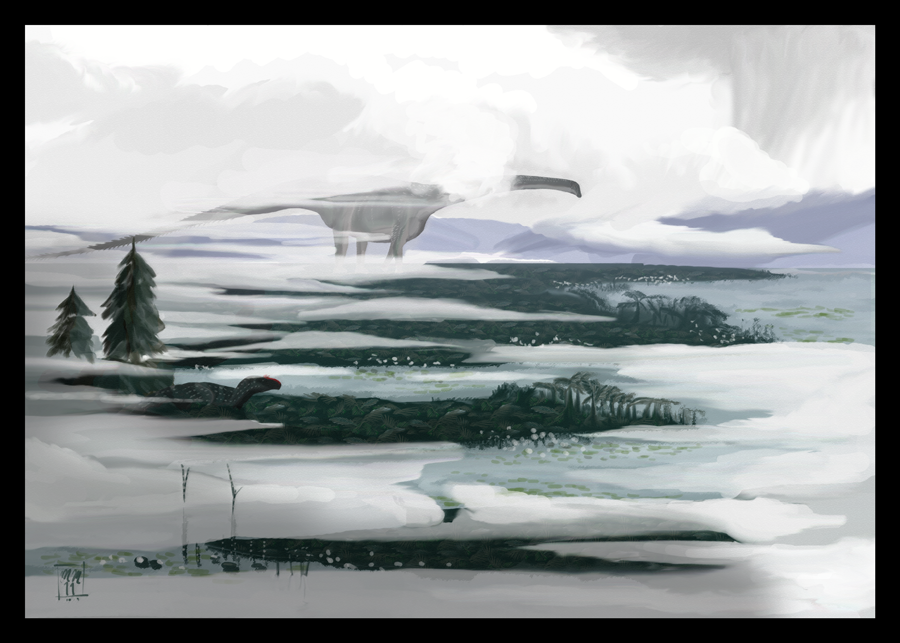home > natural history
Amphicoelias fragillimus
"very fragile double cavity"

In 1878, E.D. Cope discovered a gigantic dinosaur vertebra in Colorado. In a very bad state of preservation, the vertebrae was catalogued, described, drawn, and lost. All that remains is a drawing in Cope's description, which claims the vertebra was eight feet high. Cope, recognizing the bone as belonging to a gigantic sauropod of the previously known genus Amphicoelias, assigned the vertebra to the new species Amphicoelias fragillimus. The specific name (meaning "very fragile") is an appropriate designation, since the bone probably crumbled to dust. A. fragillimus was one of the largest dinosaurs ever found, with a length of around 200ft and a mass exceeding that of the largest known titanosaurs.
Here I've reconstructed A. fragillimus as a basal diplodocomororph similar to Suuwassea.
Click here to view the original description of A. fragillimus, with drawings of the known skeletal material: Page 1, Page 2
.
.
.
.
Image Details:
Media: Photoshop CS5 and Wacom Graphire 3
License:
ALL RIGHTS RESERVED
DESCRIPTION
Length: 60m (196ft)
Weight: 122t
Location: Morrison Formation, Colorado
Time: Tithonian age, late Jurassic period (150ma)
CLASSIFICATION
Kingdom: Animalia
Phylum: Chordata
Class: Stem-Aves
Order: Pachypodosauria
Superfamily: Atlantosauroidea
Genus: Amphicoelias
Species: A. fragillimus
SYSTEMATICS
Sauropsida
Diapsida
Archosauria
Ornithosuchia
Dinosauria
Sauropoda
Diplodocoidea

Above: Size of A. altus (green) and
A. fragillimus (orange) compared to a human